
Advanced Photonics Research
Scope & Guideline
Fostering Collaboration, Driving Discovery
Introduction
Aims and Scopes
- Photonics Materials and Devices:
The journal emphasizes research on novel photonic materials, including semiconductors, dielectrics, and nanostructured materials, exploring their optical properties and applications in devices such as lasers, sensors, and light-emitting diodes. - Nonlinear Optics and Metamaterials:
A significant portion of the journal is dedicated to nonlinear optical phenomena and the development of metamaterials that manipulate light in unprecedented ways, enabling applications in imaging, sensing, and communication. - Quantum and Nano-Photonics:
Research in this area focuses on quantum optics and nanoscale photonics, including the study of quantum dots, nanolasers, and photonic crystals, which are crucial for next-generation quantum computing and communication technologies. - Optoelectronic Devices and Applications:
The journal covers advancements in optoelectronic devices, including photodetectors, solar cells, and light-emitting devices, with a focus on improving performance, efficiency, and integration with existing technologies. - Biophotonics and Sensing Technologies:
Advanced Photonics Research also highlights research in biophotonics, including applications in medical imaging, sensing, and diagnostics, demonstrating the intersection of photonics with life sciences.
Trending and Emerging
- Artificial Intelligence and Machine Learning in Photonics:
The integration of AI and machine learning techniques in photonics research is rapidly gaining traction, with applications in design optimization, data analysis, and real-time imaging, highlighting the intersection of computational intelligence and experimental photonics. - Sustainable and Green Photonics:
Research focusing on sustainable materials and environmentally friendly processes in photonics is on the rise, driven by global efforts towards sustainability and the need for greener technologies. - Quantum Technologies and Quantum Photonics:
The field of quantum technologies, particularly in quantum photonics, is experiencing significant growth, with new research exploring quantum communication, quantum sensing, and quantum information processing. - Flexible and Wearable Photonic Devices:
There is an increasing focus on the development of flexible and wearable photonic devices, driven by advancements in materials science and the demand for portable and integrated technologies in health and fitness monitoring. - 3D Printing and Additive Manufacturing in Photonics:
Emerging research is exploring the integration of 3D printing techniques in the fabrication of photonic devices, allowing for complex geometries and customized designs that were previously unattainable.
Declining or Waning
- Traditional Optical Devices:
There is a noticeable decrease in publications focusing on conventional optical devices like standard lenses and mirrors, likely due to the rise of advanced materials and techniques that offer better performance and functionalities. - Basic Theoretical Studies:
The journal has seen fewer submissions centered on basic theoretical studies without practical applications, as the trend shifts towards research that directly contributes to technological advancements or novel applications. - Classical Photonic Crystals:
Research specifically on classical photonic crystals has become less prominent, possibly overshadowed by emerging topics such as topological photonics, which offer more innovative approaches to manipulating light. - Static Imaging Techniques:
There has been a decline in the development and publication of static imaging techniques, as dynamic and real-time imaging technologies gain more attention in the context of advanced applications.
Similar Journals

Advanced Photonics
Pioneering Discoveries in Photonics and BeyondAdvanced Photonics, published by SPIE-SOC PHOTO-OPTICAL INSTRUMENTATION ENGINEERS, is a prestigious open-access journal dedicated to cutting-edge research in the fields of photonics, optics, biomedical engineering, and material science. Since its inception in 2019, this journal has successfully established itself in the top quartile (Q1) of various categories, including Atomic and Molecular Physics, Biomedical Engineering, and Electronic, Optical and Magnetic Materials, showcasing its critical role in advancing knowledge and innovation within these disciplines. With impressive Scopus rankings—#8 in Biomedical Engineering, #7 in Atomic and Molecular Physics, and #10 in Materials Science—Advanced Photonics serves as an essential platform for researchers, professionals, and students alike, offering a wealth of accessible scholarly content to keep pace with rapid technological developments. The journal not only fosters collaboration and knowledge dissemination within the global scientific community but also emphasizes the importance of open access to ensure that groundbreaking research benefits society as a whole.
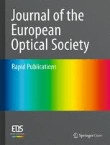
Journal of the European Optical Society-Rapid Publications
Empowering Rapid Insights for Optical InnovatorsJournal of the European Optical Society-Rapid Publications, with ISSN 1990-2573 and published by EDP Sciences S A, is a premier open access journal dedicated to advancing the field of optics and photonics since its inception in 2006. Based in France, this journal serves as a vibrant platform for researchers, professionals, and students to disseminate their findings quickly and efficiently. Achieving a commendable Q3 ranking in Atomic and Molecular Physics and Optics (2023), it reflects a growing impact within the scientific community, despite currently holding a 33rd percentile rank among similar publications in the realm of Physics and Astronomy. The journal fosters an environment of rapid communication and collaboration, making it an invaluable resource for those interested in the latest developments and innovations in optical sciences. With open access ensuring broad visibility for all published work, the Journal of the European Optical Society-Rapid Publications is positioned as a key contributor to enhancing the understanding and application of optical technologies.
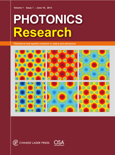
Photonics Research
Illuminating the Future of PhotonicsPhotonics Research, published by Chinese Laser Press, is a premier international journal that aims to disseminate cutting-edge research and advancements in the field of photonics, encompassing areas such as atomic and molecular physics, optics, and materials science. Since its inception in 2013, this journal has established itself as a vital resource for academics and professionals, reflected in its impressive Q1 rankings in both Atomic and Molecular Physics, and Optics (15/224) and Electronic, Optical and Magnetic Materials (26/284) as per Scopus, underscoring its influence within the scientific community. With substantial contributions to the field, Photonics Research continues to foster innovation and collaboration among researchers, serving as an essential platform for the publication of high-quality studies that push the boundaries of knowledge. The journal operates on an open-access model, ensuring that research is readily available to a global audience, thereby enhancing its accessibility and impact. Whether you are a researcher, student, or professional, engaging with this journal offers a significant opportunity to stay at the forefront of photonic technologies and ideas.
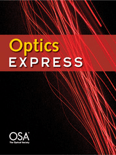
OPTICS EXPRESS
Illuminating the Future of Optical ScienceOPTICS EXPRESS is a premier peer-reviewed journal published by the Optica Publishing Group, specializing in the rapidly evolving fields of Atomic and Molecular Physics and Optics. With an impressive Q1 ranking in its category and positioned in the 75th percentile among leading journals in Physics and Astronomy, OPTICS EXPRESS serves as a vital platform for disseminating innovative research findings. Since its inception in 1997 and transitioning to Open Access in 1998, the journal has ensured that groundbreaking scientific contributions are accessible to a global audience, fostering collaboration and advancement in optical science. Additionally, with annual publications converging from 1997 to 2024, this journal not only tracks the latest advancements but also shapes the future landscape of optics research. Whether you are a seasoned researcher, a dedicated professional, or a passionate student, OPTICS EXPRESS offers a wealth of knowledge and a commitment to excellence in the optics community.
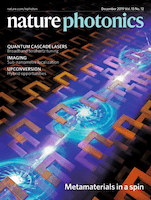
Nature Photonics
Connecting Researchers to the Pulse of Photonics ProgressNature Photonics, published by NATURE PORTFOLIO, stands as a leading journal in the realm of photonics, specializing in the convergence of atomic and molecular physics and optics, as well as electronic, optical, and magnetic materials. Established in 2007 and continuing through 2024, this esteemed journal boasts an impressive 2023 ranking of Q1 in both its primary categories, highlighting its importance and influence within the scientific community. With a Scopus rank of #3 in both materials science and physics categories, and a remarkable 99th percentile ranking, Nature Photonics serves as a vital platform for disseminating pioneering research and innovative discoveries that drive the field forward. Although it does not currently offer open access options, the journal remains accessible to a broad audience interested in the latest advancements in photonics, including researchers, professionals, and students eager to explore cutting-edge developments. By fostering a community of collaboration and knowledge exchange, Nature Photonics continually shapes the future of photonics research.
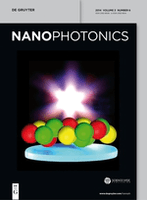
Nanophotonics
Advancing Innovations in Nanoscale OpticsNanophotonics, published by WALTER DE GRUYTER GMBH, is a premier open access journal dedicated to advancing the field of nanophotonics, encompassing cutting-edge research in atomic and molecular physics, optics, biotechnology, and electronic engineering. With a significant impact factor and a notable presence in the top quartile rankings (Q1) across multiple categories, including electrical and electronic engineering, this journal serves as a critical resource for researchers and professionals aiming to explore the latest developments in the manipulation of light at the nanoscale. Since its inception in 2012, Nanophotonics has been an influential platform for disseminating innovative ideas and breakthroughs, offering unrestricted access to its content, thus fostering a collaborative environment conducive to scientific discovery. Located in Berlin, Germany, and with a commitment to promoting the highest standard of scholarly excellence, Nanophotonics continues to shape the future of optical materials and technology, inviting contributions from both established experts and emerging scholars.
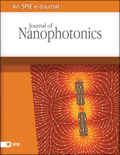
Journal of Nanophotonics
Illuminating the Future of NanotechnologyThe Journal of Nanophotonics, published by SPIE-SOC Photo-Optical Instrumentation Engineers, is an esteemed platform dedicated to advancing the field of nanotechnology through pioneering research in photonics. Since its inception in 2007, this journal has become instrumental in disseminating innovative findings and fostering collaborative discussions, especially in the domains of Condensed Matter Physics, Electronic, Optical and Magnetic Materials, and Nanoscience and Nanotechnology. Currently ranked within the Q3 category across these fields, it serves as a vital resource for academics, industry professionals, and students keen on exploring the multifaceted applications and implications of nanophotonic technologies. With its convergence set to continue until 2024, the journal offers a non-open-access model, ensuring rigorous peer-review standards and high-quality publications that contribute to the global body of knowledge.
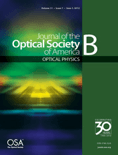
JOURNAL OF THE OPTICAL SOCIETY OF AMERICA B-OPTICAL PHYSICS
Pioneering Insights in Atomic and Molecular PhysicsJOURNAL OF THE OPTICAL SOCIETY OF AMERICA B-OPTICAL PHYSICS, published by Optica Publishing Group, serves as a leading platform for groundbreaking research in the fields of optical physics, atomic and molecular physics, and statistical and nonlinear physics. With an ISSN of 0740-3224 and an E-ISSN of 1520-8540, this esteemed journal has been in circulation since 1984 and is dedicated to advancing the understanding of optical phenomena and related technologies. It holds a commendable position in the academic community, with a 2023 Scopus ranking reflecting its significance—placing it in the top quartile for both Atomic and Molecular Physics and Statistical and Nonlinear Physics. Although it is not an open-access publication, it provides extensive access options to ensure that research is disseminated effectively within the scientific community. This journal is instrumental for researchers, professionals, and students alike, aiming to keep them informed of the latest advancements and trends in optical science. With a convergence of expertise and innovation, JOSA B continues to play a pivotal role in shaping the future of optical research.

APPLIED OPTICS
Exploring Innovations in Applied OpticsApplied Optics, published by Optica Publishing Group, is a prestigious journal dedicated to the field of optics and photonics. With an ISSN of 1559-128X and an E-ISSN of 2155-3165, this journal serves as a critical platform for researchers, professionals, and students eager to disseminate innovative findings and advancements in applied optics. Established in 1962, it has maintained a significant presence in the academic community, currently holding a Q2 category ranking in various disciplines including Atomic and Molecular Physics, Electrical and Electronic Engineering, and Miscellaneous Engineering as per the 2023 metrics. The journal's reputation is underscored by its solid Scopus rankings, attesting to its influential research output. While not an open-access journal, it continues to offer vital insights and discussions on the latest research topics that are critical to the advancement of technologies in optics, ensuring accessibility to vital knowledge for those within the field.

OPTICAL MATERIALS
Unveiling the Potential of Optical MaterialsOPTICAL MATERIALS is a peer-reviewed journal published by Elsevier, focusing on the intricate field of optical materials within various scientific domains including atomic and molecular physics, electronic engineering, and chemistry. With an impact factor indicative of its relevance, it ranks in the Q2 category across multiple areas such as Electrical and Electronic Engineering, and Inorganic Chemistry, highlighting its critical position in advancing research and innovation. Established in 1992 and continuing its contribution until 2024, this journal serves as a vital resource for researchers and professionals aiming to disseminate significant findings in material sciences, particularly those related to optical properties and applications. While it does not offer open access, the journal remains essential for academia and industry alike, ensuring the continued exchange of valuable knowledge in this rapidly evolving field.